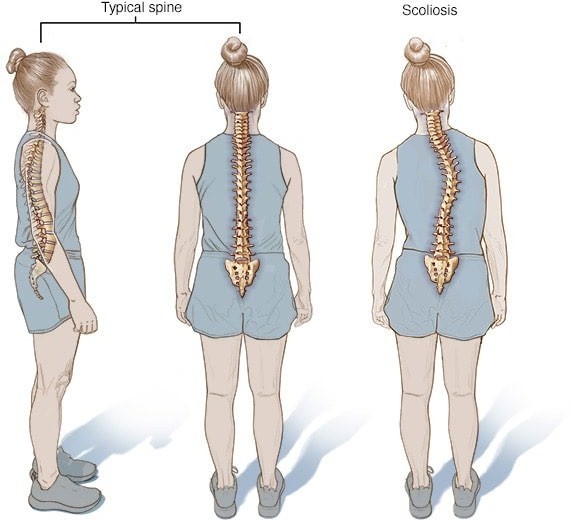A nurse is planning care for a 5-month-old infant who is scheduled for a lumbar puncture to rule out meningitis. Which of the following actions should the nurse include in the plan of care?
Apply a eutectic mixture of lidocaine and prilocaine cream topically 15 min prior to the procedure.
Keep the infant NPO for 6 hr prior to the procedure.
Hold the infant's chin to his chest and knees to his abdomen during the procedure.
Place the infant in an infant seat for 2 hr following the procedure.
The Correct Answer is C
The correct answer is: c. Hold the infant’s chin to his chest and knees to his abdomen during the procedure.
Choice A: Apply a eutectic mixture of lidocaine and prilocaine cream topically 15 min prior to the procedure.
Applying a eutectic mixture of lidocaine and prilocaine (EMLA) cream can help reduce pain during procedures like lumbar punctures. However, it typically needs to be applied 30 to 60 minutes before the procedure to be effective. Applying it only 15 minutes prior would not provide adequate analgesia.
Choice B: Keep the infant NPO for 6 hr prior to the procedure.
Keeping an infant NPO (nothing by mouth) for 6 hours is generally recommended before procedures requiring sedation or anesthesia to reduce the risk of aspiration. However, lumbar punctures do not typically require such prolonged fasting, especially in infants, unless sedation is planned.
Choice C: Hold the infant’s chin to his chest and knees to his abdomen during the procedure.
This is the correct positioning for a lumbar puncture in infants. The infant should be held in a curled-up position, with the chin to the chest and knees to the abdomen, to maximize the space between the vertebrae and allow easier access to the lumbar region. This position helps to stabilize the infant and reduce movement during the procedure.
Choice D: Place the infant in an infant seat for 2 hr following the procedure.
Post-procedure care for a lumbar puncture typically involves monitoring the infant for any signs of complications, such as headache or infection. Placing the infant in an infant seat for 2 hours is not a standard recommendation. Instead, the infant should be observed and allowed to rest comfortably.
Nursing Test Bank
Naxlex Comprehensive Predictor Exams
Related Questions
Correct Answer is C
Explanation
Choice A: Hepatitis B (HepB) vaccine is not contraindicated for a child who has an allergy to eggs, as it does not contain any egg protein or other components that can cause an allergic reaction. Hep B vaccine is recommended for all infants at birth and children up to 18 years of age.
Choice B: Inactivated poliovirus (IPV) vaccine is not contraindicated for a child who has an allergy to eggs, as it does not contain any egg protein or other components that can cause an allergic reaction. IPV vaccine is recommended for all children at ages 2, 4, and 6 to 18 months and at ages 4 to 6 years.
Choice C: Influenza, live attenuated (LAIV) vaccine is contraindicated for a child who has an allergy to eggs, as it contains egg protein that can cause an allergic reaction. LAIV vaccine is a nasal spray that contains live but weakened influenza viruses. LAIV vaccine is recommended for healthy children aged 2 years and older who do not have chronic medical conditions or other contraindications.
Choice D: Haemophilus influenzae type b (Hib) vaccine is not contraindicated for a child who has an allergy to eggs, as it does not contain any egg protein or other components that can cause an allergic reaction. Hib vaccine is recommended for all children at ages 2, 4, and 6 months and at ages 12 to 15 months.
Correct Answer is A
Explanation
Choice A: Body image changes are the most common reaction for an adolescent who has scoliosis and requires surgical intervention, as scoliosis affects the appearance and shape of the spine and torso. Body image changes can lead to low self-esteem, social isolation, depression, or anxiety.
Choice B: Feelings of displacement are not the most common reaction for an adolescent who has scoliosis and requires surgical intervention, as displacement means feeling out of place or unwanted in a certain situation or environment. Feelings of displacement can occur due to hospitalization, separation from peers or family, or lack of control over one's life.
Choice C: Loss of privacy is not the most common reaction for an adolescent who has scoliosis and requires surgical intervention, as loss of privacy means having one's personal information or space exposed or invaded by others. Loss of privacy can occur due to frequent examinations, procedures, or interventions by health care providers or staff.
Choice D: Identity crisis is not the most common reaction for an adolescent who has scoliosis and requires surgical intervention, as identity crisis means having difficulty or confusion in defining one's self-concept or role in society. Identity crises can occur due to developmental changes, peer pressure, or cultural expectations.

Whether you are a student looking to ace your exams or a practicing nurse seeking to enhance your expertise , our nursing education contents will empower you with the confidence and competence to make a difference in the lives of patients and become a respected leader in the healthcare field.
Visit Naxlex, invest in your future and unlock endless possibilities with our unparalleled nursing education contents today
Report Wrong Answer on the Current Question
Do you disagree with the answer? If yes, what is your expected answer? Explain.
Kindly be descriptive with the issue you are facing.
